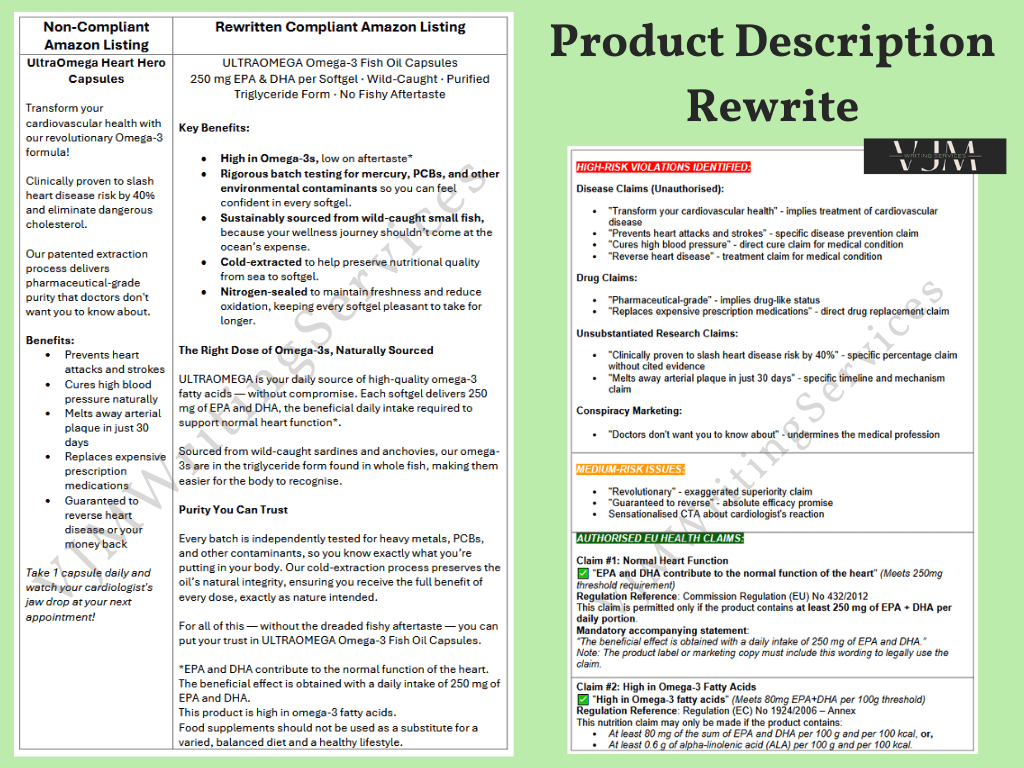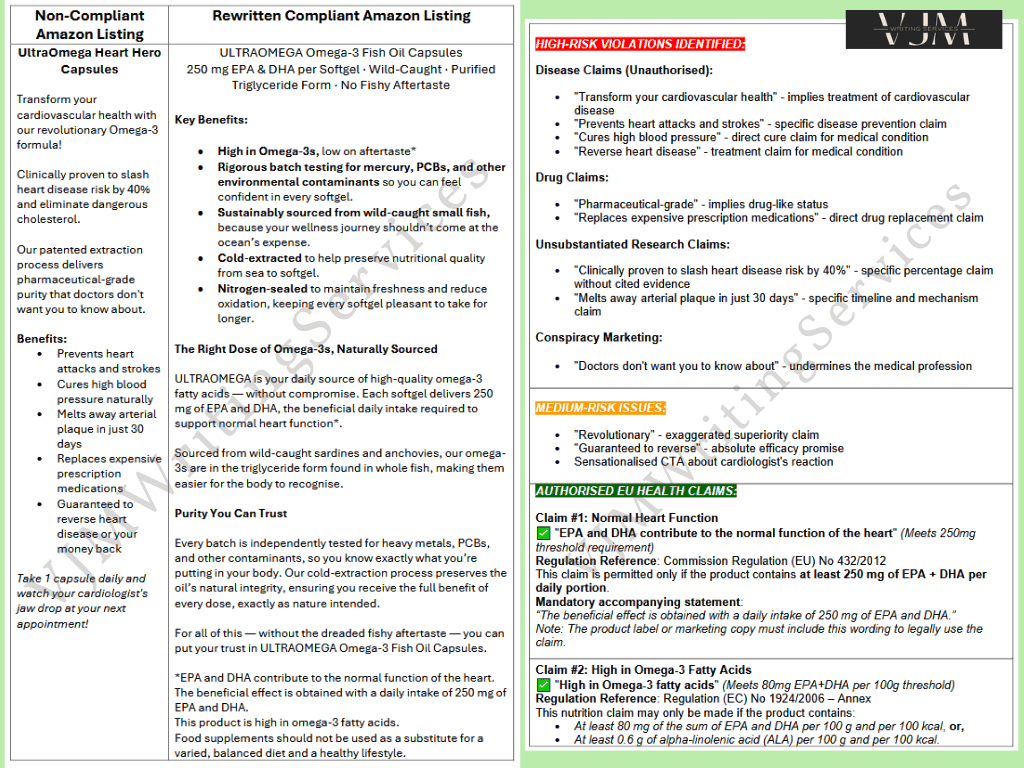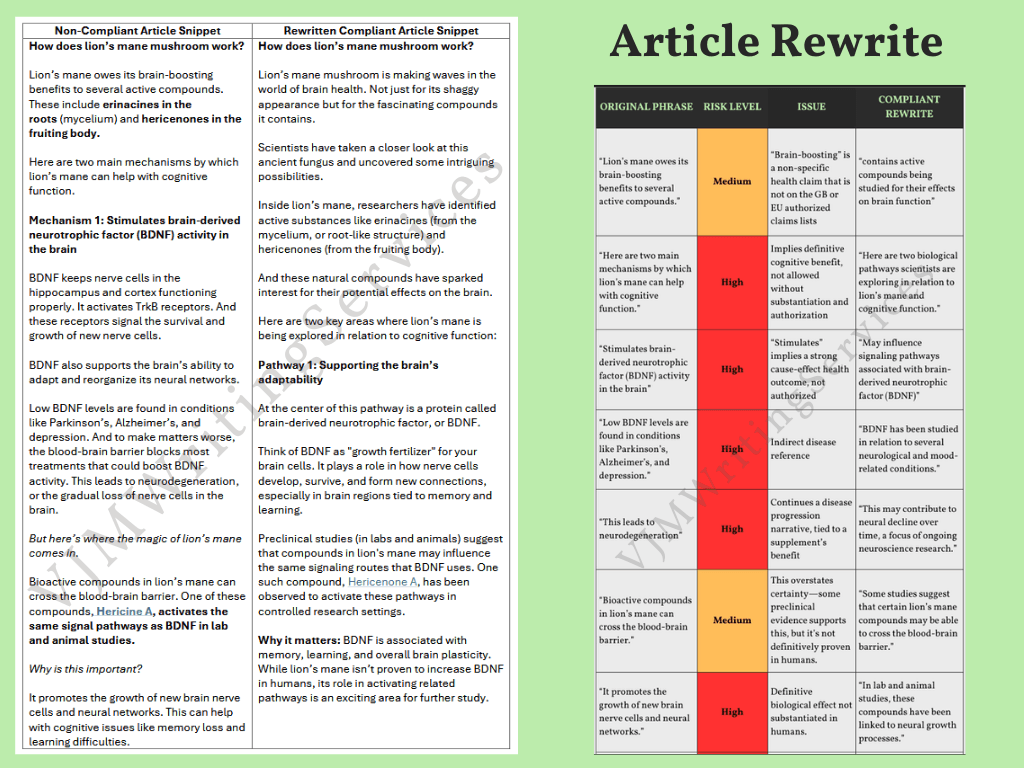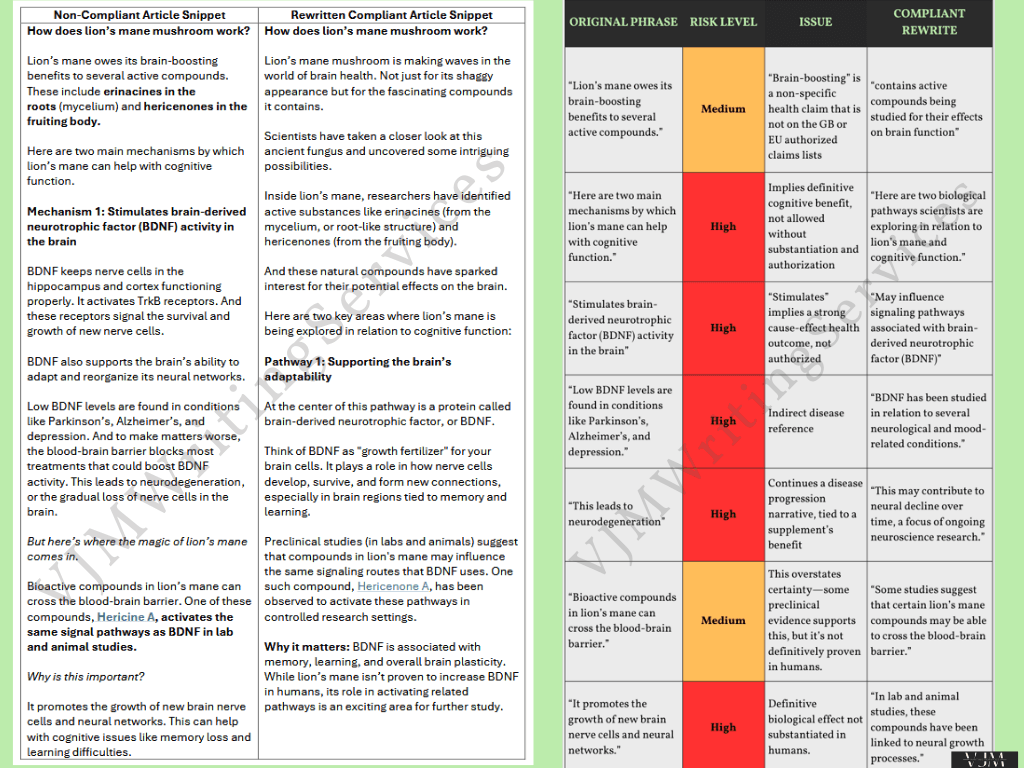Portfolio & Writing Samples
Compliance-Informed Copywriting That Protects, Persuades, and Performs
Compliance copywriting involves more than just choosing the right words to reduce risk across highly regulated platforms. Your messaging still needs to connect with your audience.
These examples demonstrate how I audit, rewrite, and create content designed to:
Avoid unauthorised health claims
Reduce the risk of listing rejections and suspensions
Build trust with both customers and platforms
Keep your products visible and selling
Note: These samples are based on mock scenarios and anonymised examples.
Sample 1: Product Description Rewrite + Audit Snapshot
This example shows how I rewrote a flagged Amazon listing for ULTRAOMEGA Heart Hero Capsules. The original product description contained multiple high-risk violations, including unauthorised disease claims, unsubstantiated research claims, and banned drug references. These triggered platform rejections and posed a significant regulatory compliance risk.


Audit Snapshot
High-Risk Violations Identified include:
Unauthorised disease claims: “Prevents heart attacks,” “Cures high blood pressure,” “Reverses heart disease”
Unsubstantiated clinical claims: “Clinically proven to slash heart disease risk by 40%”
Drug-related claims: “Pharmaceutical-grade purity” and “Replaces prescription medications”
Conspiracy marketing: “Doctors don’t want you to know about this”
Approved Claims Integrated:
EPA and DHA contribute to the normal function of the heart” (Commission Regulation (EU) No 432/2012)
High in Omega-3 fatty acids” (Regulation (EC) No 1924/2006)
Outcome
The rewritten listing:
Removed all high-risk language
Incorporated authorised EU health claims
Added required disclaimers and compliant phrasing
Optimised content to reduce Amazon/Google rejection risks and build consumer trust
Sample 2: Article Rewrite + Compliance Audit Snapshot
This example shows how I rewrote a blog article on lion’s mane mushrooms that contained multiple high-risk compliance issues. The original copy overstated scientific findings, included unauthorised cognitive health claims, and referenced diseases in a way likely to trigger ASA/EFSA scrutiny.
The goal was to rewrite the article so it remained educational, SEO-friendly, and engaging, while removing unsupported claims and integrating safer, compliance-informed phrasing.


Audit Snapshot
High-Risk Violations Identified:
“Brain-boosting benefits” → Non-specific health claim, not on EU/UK authorised claims list
“Helps with cognitive function” → Implies treatment/prevention of disease, not authorised
References to Parkinson’s, Alzheimer’s, and depression → High-risk indirect disease claims
“Promotes growth of new brain cells” → Definitive biological outcome not substantiated in humans
Action Taken:
Reframed findings using evidence-informed, compliant phrasing
Removed direct disease references and overstated claims
Retained SEO value by using audience-relevant keywords like “brain health” and “adaptability”
Added clear context about preclinical research limitations
Outcome
The rewritten article is:
Compliant with ASA/EFSA expectations
Educational and engaging while avoiding overpromises
Structured for long-term SEO performance
Built to reduce platform and regulatory risk
Join My Email List
Stay connected and get the latest tips and insights on creating effective content for your nutrition and wellness brand. From content strategy advice to practical writing tips, I’ll share valuable insights straight to your inbox.
The information and services provided by VJM Writing Services are for educational and marketing purposes only and do not constitute legal or regulatory advice.
While we create content designed to align with regulatory frameworks (ASA, EFSA, FDA, FTC, etc.), compliance involves many factors beyond marketing copy, including formulations, labelling, and internal processes.
We cannot guarantee product approvals or prevent regulatory action, and we recommend consulting a qualified legal or regulatory professional for full compliance support.
© vjmwritingservices 2025


